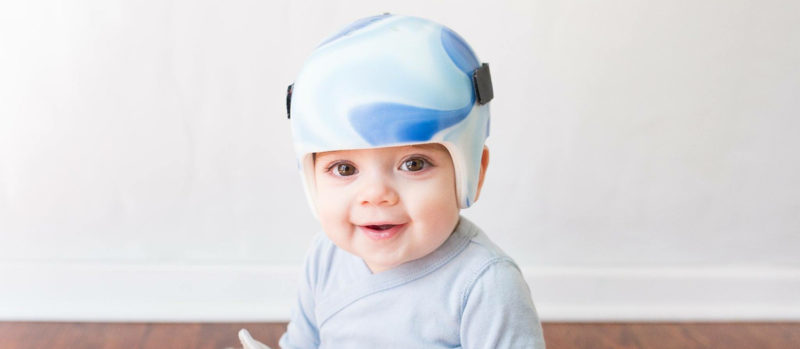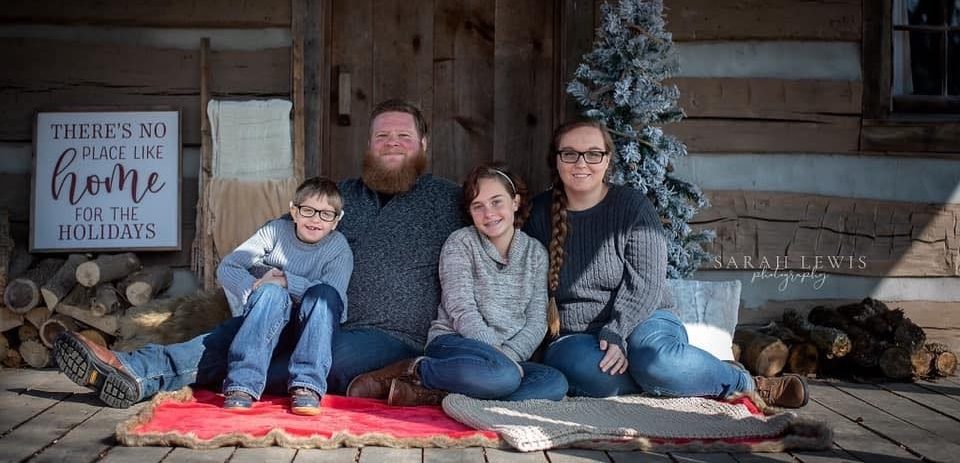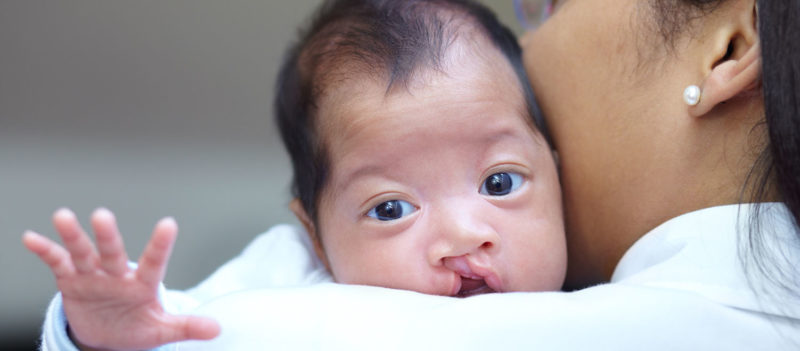As a new mother, you want everything for your baby to be the absolute best from the get-go. I had no idea when my son Cillian was born that anything was wrong with his head. My husband Hector and I were so captivated by his big, beautiful eyes and busy adjusting to that new parent brain fog that we didn’t notice much else.
We got the first clue that Cillian might have some issues at his 1-month check-up. Our pediatrician commented that he had a ridge on his head. It could have been due to the extended amount of time he had spent in the birth canal. But at his 2-month appointment, it wasn’t getting better and our pediatrician referred us to a specialist.
Discovering Craniosynostosis
That’s when I started doing research and learned about craniosynostosis. It occurs when bones in the skull grow together too early. They’re supposed to remain open when a baby is young to allow the brain to grow. Without treatment, children may eventually experience headaches, develop learning disabilities, and have problems with their eyesight. It’s best for children to have surgery to reshape the skull to allow for proper brain growth.
We had to wait six weeks to see the specialist. It was then that Cillian was officially diagnosed with sagittal craniosynostosis. (Sagittal refers to where the skull bones fused together prematurely. Cillian’s fusion made his skull a bit longer and more narrow than normal.) The doctor explained the procedure that would be used to correct the deformity: cranial vault remodeling (CVR). This is an open procedure where an incision is made over the top of the child’s head from ear to ear, and the skull is manually reshaped in the operating room to allow for the brain to grow normally.
I had read online about a less invasive procedure (endoscopic) to correct this issue by removing the fused strip of bone and using helmet therapy to reshape the skull, so I asked about it. I was told that there was no surgeon in our state of West Virginia who was doing the endoscopic repair.
The Decision to Travel
It was really important to me and Hector to explore this idea of an endoscopic surgery. It’s quite possible that Cillian would have done fine with the open procedure, but it sounded like a much more serious surgery to me, with higher risks. We had a gut feeling that we had to look into the minimally invasive option for Cillian’s sake.
An online search led us to Cincinnati Children’s. I called, explained our situation, and was able to make an appointment quickly. We met first with a neurosurgeon and then a craniofacial surgeon. We found out that Cillian was a candidate for the minimally invasive surgery (called an endoscopic strip sagittal craniectomy), learned more about the procedure, and scheduled a surgery date. Things moved pretty quickly because the endoscopic surgery needs to be done when an infant is rather young.
The Procedure
Cillian had surgery right before he turned 5 months old and it went great. He had just two small incisions that I can barely see anymore (he’s now 1), and we got to take him home the very next day. The team understood that we were from out of town and coordinated our care to minimize our time away. They helped us with getting Cillian fitted for a helmet, and found a local clinic that could take care of minor helmet adjustments once we were back home.
After surgery, Cillian wore a helmet for 23 hours a day for eight months to help reshape his skull. We are confident in knowing that his skull now has enough space to allow his brain to grow properly.
If you’re in the middle of your own craniosynostosis journey, here’s what Hector and I want you to know about our experience.
What We Learned
On second opinions:
- Trust yourself. Don’t feel guilty about seeking a second opinion. If you have a feeling that you want additional input, go out and find it.
- Trust the people you’ve selected to care for your child. As much as you want to do everything, you can’t do it all.
- We can’t stress enough the importance of finding quality health care.
- Join support groups online or on Facebook to speak with other parents in similar situations.
On traveling for care:
- Make sure your care team knows you’re from out of town. Having our appointments coordinated was crucial.
- Cranio Care Bears is a nonprofit organization that sends your child a care package before surgery. They’re free. Get one!
- Pack snacks for the car rides — for both you and your child. Even when you allow extra time for traffic, delays can happen.
- Travel is an added expense. Having the small helmet adjustments and fit issues done locally helped limit our trips out of town.
- Use the travel time to connect. Having a child with a medical condition is stressful enough. Take the time confined in the car to talk about other things and grow as a family.
On helmet therapy:
- Having a good orthotist and helmet therapy is just as crucial to success and limiting the need for a second surgery as finding a good surgeon.
- Adjusting to your child in a helmet is harder on the parent than the child.
- When people ask questions or look (and they will!), use those opportunities to educate them.
- Your child will cry at first. The helmet itches. It gets hot. Talk to your orthotist for helpful tips.
- You’ll miss out on snuggling and rubbing heads. Also, watch out for head butting!
- It was an adjustment to learn how to nurse while Cillian had his helmet on.
- Having your child learn to walk in a helmet is great! We knew Cillian couldn’t hurt his head very easily while wearing the helmet.
Since our last appointment when we got the OK to remove Cillian’s helmet, we don’t need to return to Cincinnati for a full year. Cillian will continue to be followed at Cincinnati Children’s for the next several years until his doctors are comfortable with his brain growth. We couldn’t be more pleased with our decision to travel for care.
Learn more about our Craniosynostosis and Cranial Reconstruction Center.






Hi,
Thank you for writing this. My son had the same surgery your son had on April 1st, when he was 3.5 months old. There are no helmets where we live so we traveled overseas to get one. Our neurosurgeon said to call him when we see red spots so he can adjust the helmet but so far, nothing, and it’s been 4 weeks. How often did you have to take your son for adjustments? We have the same type of helmet with the screw on top. I thought it would have to be adjusted very often. Thank you!